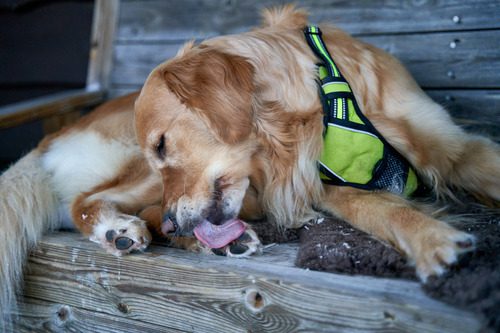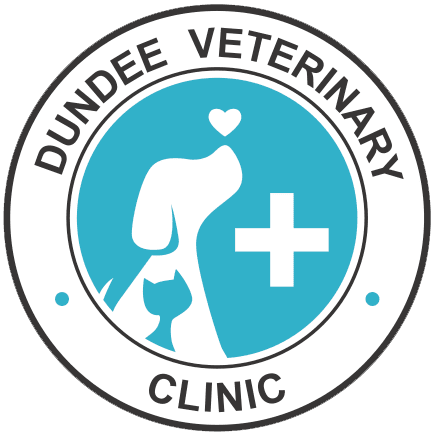Dog Paw Pad Yeast Infection: Signs and Treatment
When your dog starts excessively licking their paws or walking gingerly, it may signal more than just simple irritation. One potential cause you might not expect is a dog paw pad yeast infection. This uncomfortable condition can cause significant irritation for your pet and often requires veterinary care to resolve. If you notice changes in your dog’s paws, understanding the signs and available treatments for a dog paw pad yeast infection will help you act quickly and protect your dog’s comfort and health. If you notice any symptoms mentioned below, contact Dundee Veterinary Clinic in Dundee, Michigan at 734-529-2429 to schedule an appointment with our team.

What Is a Dog Paw Pad Yeast Infection?
A dog paw pad yeast infection occurs when yeast, a type of fungus, grows uncontrollably on the skin of a dog’s paws. Small amounts of yeast naturally live on a dog’s skin without causing harm. Problems arise when the yeast population grows excessively, often due to factors like allergies, moisture, or a compromised immune system. Dog paw pad yeast infections can be extremely uncomfortable for dogs. They often lead to persistent itching, inflammation, and secondary infections. Early recognition and veterinary intervention are key to preventing further complications.
Common Causes of Yeast Overgrowth
Several factors can trigger a dog paw pad yeast infection:
- Environmental Allergies: Pollen, mold, and dust mites can inflame the skin and promote yeast growth.
- Food Sensitivities: Certain food ingredients may trigger allergic responses that lead to skin irritation.
- Excessive Moisture: Constant wetness from licking, swimming, or humid environments creates an ideal environment for yeast.
- Weakened Immune System: Dogs with chronic illnesses or those undergoing immune-suppressing treatments are more susceptible.
- Poor Paw Hygiene: Dirt, debris, and trapped moisture can support yeast development if not regularly cleaned.
Recognizing the Signs of a Dog Paw Pad Yeast Infection
Recognizing a dog paw pad yeast infection early makes a significant difference in how quickly your dog can find relief. Yeast infections tend to produce distinctive symptoms that set them apart from other types of paw irritation.
Most Common Symptoms
Look for the following signs if you suspect a dog paw pad yeast infection:
- Persistent licking and chewing
- Redness and inflammation between the toes and on the paw pads
- Brown discoloration
- Thickened or scaly skin
- A musty or “corn chip” smell
- Sensitivity to touch
- Swelling in the paw pads
Each dog may display symptoms differently, but even one or two of these signs could indicate a dog paw pad yeast infection that needs attention.
Diagnosing a Dog Paw Pad Yeast Infection
If your dog is showing symptoms, a veterinary exam is the best step forward. At Dundee Veterinary Clinic, we perform a thorough evaluation to accurately diagnose a dog paw pad yeast infection and rule out other potential issues.
Diagnostic Steps
To properly diagnose a dog paw pad yeast infection, your veterinarian may:
- Perform a Physical Exam: Visual inspection helps identify obvious signs like redness, swelling, and odor.
- Conduct Skin Scrapings: Collecting a small sample from the paw pads can confirm the presence of yeast under a microscope.
- Evaluate for Underlying Conditions: Allergies, hormonal imbalances, and other medical conditions may contribute to recurring infections.
- Review Medical History: Previous skin issues, medications, and lifestyle factors all play a role in diagnosis.
Accurate diagnosis ensures that your dog receives the correct treatment and prevents unnecessary discomfort or repeat infections.
How Is A Dog Paw Pad Yeast Infection Treated?
Once a diagnosis is confirmed, your veterinarian will recommend a treatment plan tailored to your dog’s specific needs. Prompt treatment not only relieves your dog’s symptoms but also reduces the risk of complications.
Veterinary Treatments
Common treatments for a dog paw pad yeast infection may include:
- Antifungal Medications: Oral or topical antifungal treatments help eliminate the yeast overgrowth.
- Medicated Shampoos and Soaks: Specialized antifungal shampoos or paw soaks reduce yeast on the skin’s surface.
- Anti-Inflammatory Medications: If inflammation is severe, additional medications may help control swelling and discomfort.
- Addressing Underlying Conditions: Managing allergies, hormonal imbalances, or immune issues prevents future infections.
Veterinary guidance is essential because untreated yeast infections can spread or develop into more severe health problems. Your veterinarian will provide detailed instructions for treatment and follow-up care.
Managing and Preventing Future Dog Paw Pad Yeast Infections
After treating an active infection, managing your dog’s paw health becomes a priority to prevent future issues. Lifestyle changes, routine care, and monitoring can all help keep infections at bay.
Daily Paw Care
Simple habits can reduce the risk of another dog paw pad yeast infection:
- Always thoroughly dry your dog’s paws after walks, swims, or rainy weather.
- Use pet-safe wipes to remove dirt, pollen, and allergens after outdoor time.
- Keeping fur short between the toes prevents moisture buildup.
- Avoid prolonged walking on hot, moist, or dirty surfaces.
Diet and Allergy Management
Managing your dog’s diet and allergies also plays a major role in preventing yeast infections.
- Feed a balanced diet with high-quality, veterinarian-recommended foods that support a healthy immune system.
- Identifying and avoiding food allergens helps reduce inflammatory responses.
- Discuss supplements with your vet as certain ones may support skin health, but they should be recommended by your veterinarian.
Is It Time to Contact Dundee Veterinary Clinic?
If you notice signs of a dog paw pad yeast infection, taking early action will protect your dog’s comfort and prevent serious complications. Persistent licking, unusual odors, or visible redness should never be ignored. The team at Dundee Veterinary Clinic in Dundee, Michigan, can help with expert diagnosis and effective treatment options. Call us today at 734-529-2429 to schedule an appointment and give your dog the care they deserve.
Recent Posts
About Us
At Dundee Veterinary Clinic, we cherish your pets as part of your family, and we value your role as their primary caregiver. Through honest communication, education, and support for your pet’s needs, our veterinarians aim to provide them with a lifetime of excellent care. We want to ensure that you and your companions get to spend many happy years together.
